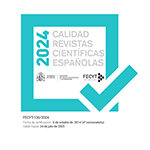Animula Christianized: the dead or missing animal as a symbol in Alcuin of York and his Roman antecedents
Abstract
This paper explores the motif of dead or missing birds in Alcuin of York’s Latin poetry. The Alcuinian works related to this topic will be described and situated against the backdrop of classical sources dedicated to deceased animals. Given the philosophical implications of this literary motif, the concept of the Seelenvogel and the choice of anima or animus to represent the soul will likewise be analyzed. Following a discussion of Alcuin’s possible influences, with special emphasis on Ovid’s Amores 2.6 and Catullus’s Carmina 2 and 3, the paper will discuss the adaptation of a classical symbol to the Christian context of the High Middle Ages. This study’s main contributions consist in 1) a discussion of the interrelationships and coherency that connect the large and chronically disparate set of Latin works dedicated to dead animals and 2) an analysis of the surprising textual similarities linking Alcuin’s Carmina 57 and 61 to Catullus’s Carmina 2 and 3, commonalities that suggest new perspectives on the transmission of Catullus’s work to later eras.
Downloads
Article download
License
In order to support the global exchange of knowledge, the journal Cuadernos de Filología Clásica. Estudios latinos is allowing unrestricted access to its content as from its publication in this electronic edition, and as such it is an open-access journal. The originals published in this journal are the property of the Complutense University of Madrid and any reproduction thereof in full or in part must cite the source. All content is distributed under a Creative Commons Attribution 4.0 use and distribution licence (CC BY 4.0). This circumstance must be expressly stated in these terms where necessary. You can view the summary and the complete legal text of the licence.








